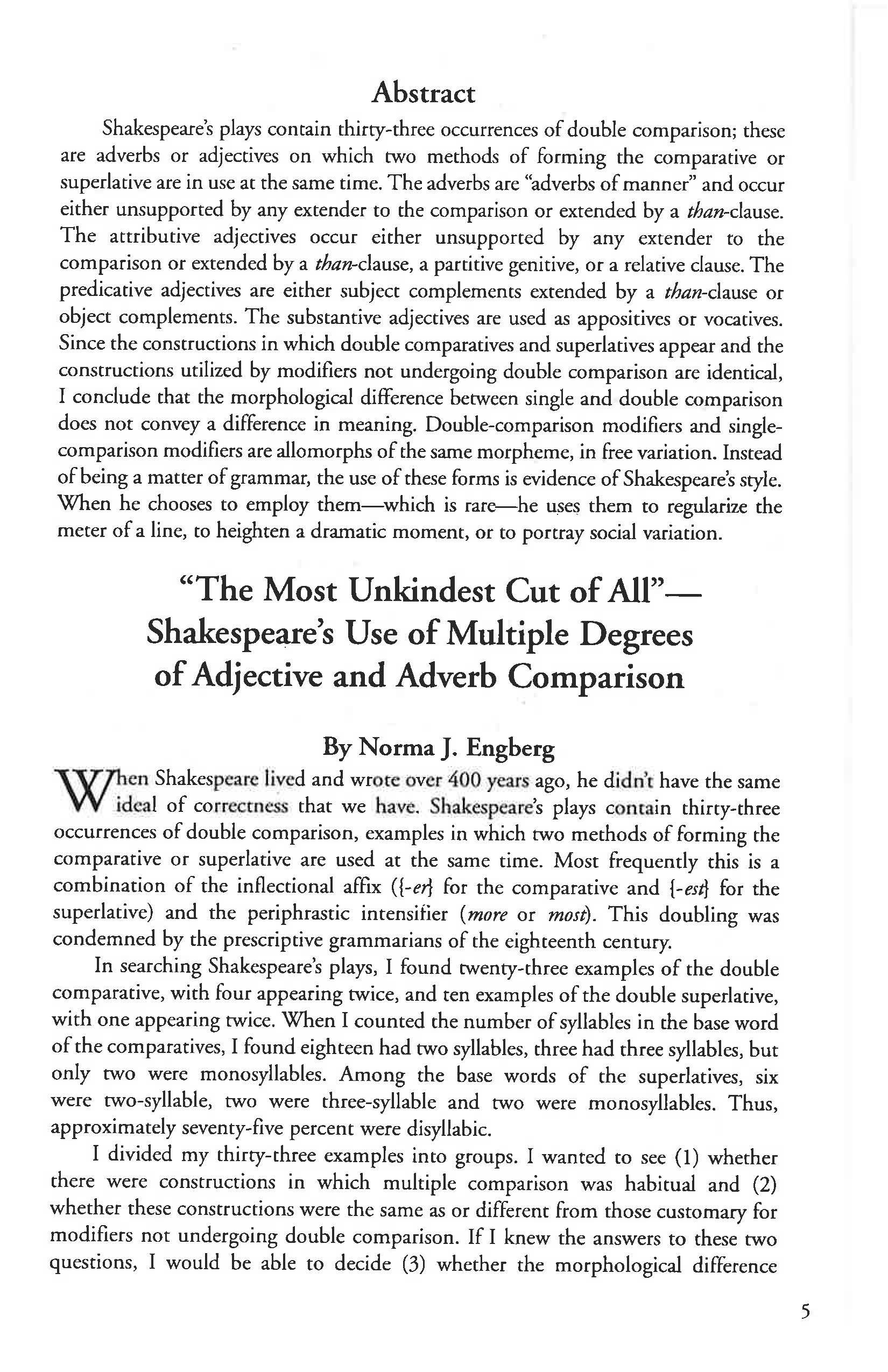The "Most Unkindest Cut of All" -- Shakespeare's Use of Multiple Degrees of Adjective and Adverb Comparison
Main Article Content
Abstract
Shakespeare's plays contain thirty-three occurrences of double comparison; these are adverbs or adjectives on which two methods of forming the comparative or superlative are in use at the same time. The adverbs are "adverbs of manner" and occur either unsupported by any extender to the comparison or extended by a than-clause. The attributive adjectives occur either unsupported by any extender to the comparison or extended by a than-clause, a partitive genitive, or a relative clause. The predicative adjectives are either subject complements extended by a than-clause or object complements. The substantive adjectives are used as appositives or vocatives. Since the constructions in which double comparatives and superlatives appear and the constructions utilized by modifiers not undergoing double comparison are identical, I conclude chat the morphological difference between single and double comparison does not convey a difference in meaning. Double-comparison modifiers and single comparison modifiers are allomorphs of the same morpheme, in free variation. Instead of being a matter of grammar, the use of these forms is evidence of Shakespeare's style. When he chooses to employ them--which is rare--he uses them to regularize the meter of a line, to heighten a dramatic moment, or to portray social variation.
